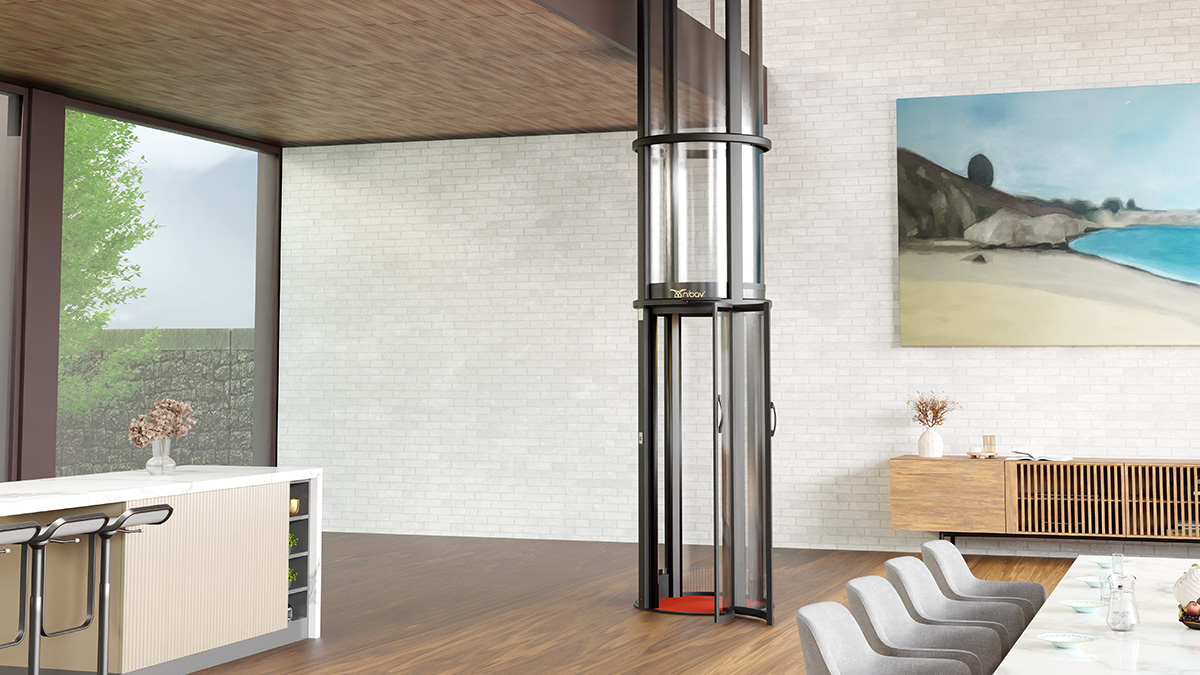
Table of Contents
- The Smart Choice for Modern Australian Homes
- 1. The Technology Behind the Ride
- 2. Design Excellence and Visual Appeal
- 3. Installation Efficiency:
- 4. Powering Mobility with Minimal Energy
- 5. Compact Design, Maximum Utility
- 6. Safety & Reliability
- 7. Maintenance and Longevity
- 8. Acoustic Comfort and Operationally Quiet
- 9. Customisation & Future-Proofing
- 10. Enhancing Property Value Through Innovation
- Final Thoughts: Why More Australians Are Going Airborne
The Smart Choice for Modern Australian Homes
What if your elevator could float on air? What if your vertical travel within your home felt more like a glide than a ride? Welcome to 2025—where the battle between Pneumatic Vacuum Elevators and Traditional Lifts isn’t just about going up and down. It’s about redefining the experience of movement inside your home.
In the heart of Australia’s evolving urban lifestyle—where sleek design meets practical living—homeowners are no longer just adding lifts for convenience. They’re investing in innovation, sustainability, and aesthetics. And that’s where Nibav Australia comes in—offering cutting-edge Pneumatic Vacuum Elevators that are as beautiful as they are functional.
So, how do these futuristic air-powered elevators stack up against traditional lift systems? Let’s get started.
1. The Technology Behind the Ride
Floating on Air vs. Old-School Mechanics
Pneumatic Vacuum Elevators (PVEs) represent the pinnacle of elegance and innovation in residential lift technology. Sleek, stylish, and powered by air pressure—these elevators use suction and atmospheric pressure to move the cabin smoothly between floors. No cables. No pulleys. No need for pits or machine rooms.
On the other side, traditional lifts rely on hydraulic pistons, traction motors, or cable-driven systems. These technologies have been around for over a century. They work—but at a cost: more space, more maintenance, and often, more noise.
Nibav Australia’s Pneumatic Vacuum Elevators use cutting-edge engineering and a plug-and-play design to deliver innovation in motion, easier than ever.+
2. Design Excellence and Visual Appeal
Lifts That Add to Your Interiors
Why hide your elevator when it can be a centerpiece?
Nibav’s Pneumatic Vacuum Elevators are cylindrical, transparent, and elegant, blending into the design of any contemporary Australian home. Imagine stepping into a crystal-clear tube that rises gently with a panoramic view of your interior. These lifts don’t just elevate—you experience the ride.
Traditional lifts, however, are boxed in. They require enclosed shafts, which means cutting into walls, modifying ceilings, and compromising interior aesthetics. The result? A functional but often visually intrusive feature.
3. Installation Efficiency:
Building or renovating in Australia can be a challenge. Labor shortages, council regulations, and design restrictions can slow things down.
But Nibav Australia breaks that mold with lifts that install in 4-5 working days. No shaft. No pit. No machine room. The structure is self-supporting, meaning it requires minimal civil work and zero heavy-duty renovation.
Compare that to traditional lifts, which demand:
- Deep pits,
- Overhead clearance,
- Dedicated machine rooms,
- Weeks (if not months) of work.
It’s clear which lift respects your time, space, and sanity.
4. Powering Mobility with Minimal Energy
Australia’s sunny skies are not just for show. Homeowners across Sydney, Brisbane, and Perth are turning to energy-efficient systems that sync with solar panels and low-consumption living.
Nibav’s pneumatic vacuum elevators operate on air pressure and use electricity only during ascent. Descent? That’s powered by gravity and air, not your electricity bill.
Traditional lifts, particularly hydraulic ones, are power-hungry on both ends—lifting and lowering. Over time, this impacts your energy bills and your carbon footprint.
5. Compact Design, Maximum Utility
One of the biggest challenges in modern Australian homes—especially townhouses and duplexes—is space. Where do you fit a bulky traditional lift without sacrificing a room?
That’s the beauty of Nibav’s Pneumatic Vacuum Elevators. The smallest model fits in a 1000 mm diameter—smaller than your average closet. And since it’s self-supporting, you don’t have to carve out walls or floors to accommodate it.
Traditional lifts often need significant square footage and structural changes, including digging for pits and reinforcing ceilings.
6. Safety & Reliability
Safety isn’t optional—it’s everything. Nibav’s pneumatic vacuum elevators come loaded with built-in features:
- Automatic descent systems in case of power failure,
- Emergency brakes that activate instantly if needed,
- Emergency backup systems,
- Certified safety standards from top global bodies.
And because there are no cables or pistons, there’s almost nothing that can snap, leak, or fail. Even in a blackout, you gently descend to the ground floor.
Traditional lifts rely on a network of mechanical systems that, if not serviced regularly, can wear out or malfunction.
Peace of Mind: Nibav’s technology turns air into your safest elevator companion.
7. Maintenance and Longevity
Traditional lifts require regular maintenance, especially hydraulic systems that can leak oil and degrade over time. Motor failures, cable replacements, and fluid changes become common after a few years.
Not so with Nibav. With fewer moving parts, no fluids, and no wear-prone mechanical systems, Nibav’s Pneumatic Vacuum Elevators only require an annual inspection to stay in top form.
And in case you’re wondering—yes, Nibav Australia offers dedicated service support across the country.
8. Acoustic Comfort and Operationally Quiet
Noise pollution is real, especially in homes with kids, elderly parents, or simply anyone who enjoys peace.
Traditional lifts can be loud—grinding motors, creaky pulleys, and whirring cables are far from subtle.
In contrast, Nibav’s pneumatic vacuum elevators are whisper quiet, emitting nothing more than the soft whoosh of air. They’re perfect for homes that want movement without the mechanical symphony.
9. Customisation & Future-Proofing
Whether you’re adding a lift for an elderly parent or planning for your future, Nibav Australia offers models that can accommodate:
2 to 4 persons,
Wheelchair accessibility,
Colour customisation to match interiors,
Compact or panoramic versions.
These aren’t just elevators. They’re an extension of your lifestyle.
And as needs change, your pneumatic vacuum elevator remains ready. Upgradable, adaptable, and versatile for all generations in the home.
10. Enhancing Property Value Through Innovation
Installing a home lift from Nibav Australia isn’t just a practical move; it is a real estate value addition as well. More and more buyers are seeking age-ready, accessible homes that make an easy-to-use and practical lift an asset and will deliver greater appeal and sale price long-term.
Traditional lifts may equally apply traction in the property market but have downsides of expense (with ongoing maintenance), a large footprint which you must consider, and a compromise on aesthetics at home from traditional apartment-style lifts.
Final Thoughts: Why More Australians Are Going Airborne
In 2025, lifts are no longer clunky machines hidden away in walls. They are now conversation starters, mobility solutions, and symbols of living smart.
Pneumatic Vacuum Elevators, with Nibav Australia leading the charge, are changing how homeowners move, live, and design their space.
Whether you are building a new villa in Melbourne, retrofitting a townhouse in Adelaide, or sleekly upgrading your coastal getaway home in the Gold Coast is the lift your lifestyle deserves.
They are futuristic, functional, and fabulously beautiful. Most importantly-they make every floor feel like the right floor.
Making the Right Choice for Your Lifestyle Let us help. Nibav Australia has transformed homes across the country with safe, stylish, and energy-efficient elevators. Our team is ready to guide you through every step—from consultation and customization to installation and support.
Get in touch today and discover why the future of home elevators floats on air.
